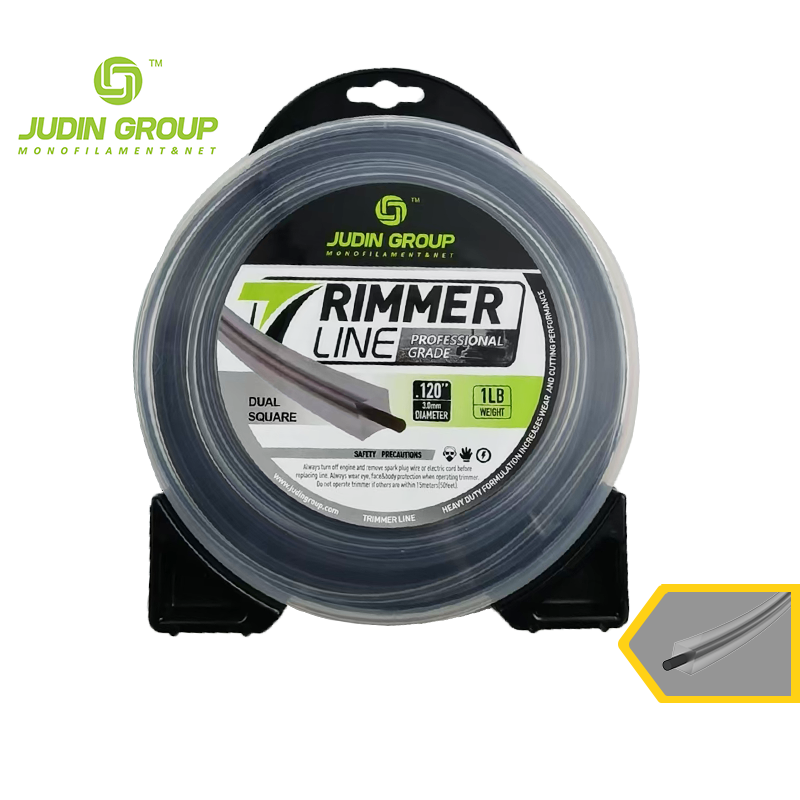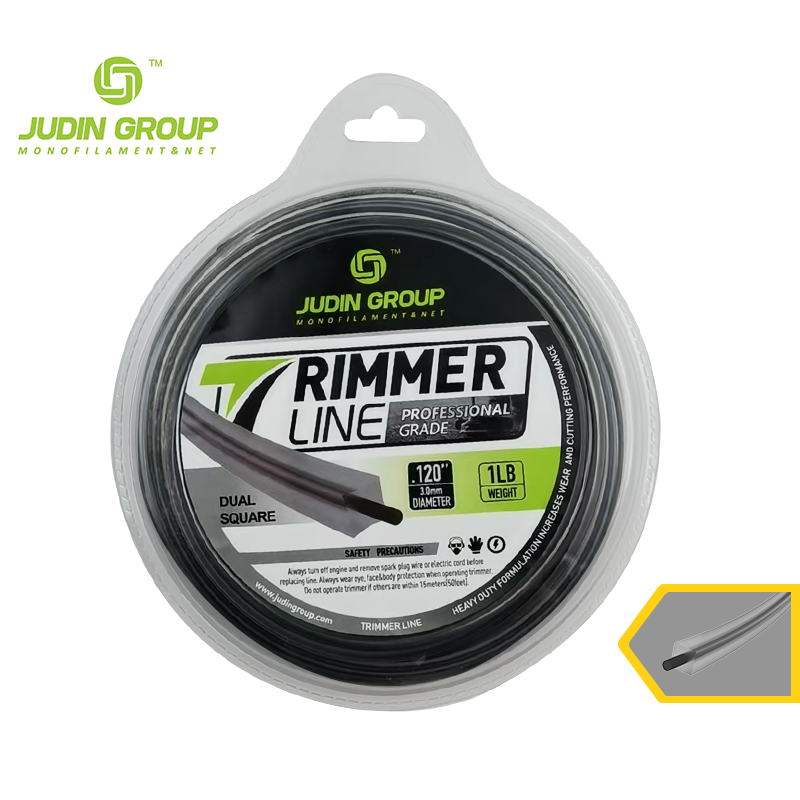The shape of your trimmer line changes how well you cut grass and weeds. You notice a difference in speed, noise, and how long the line lasts. When you pick the right shape, you get cleaner edges and smoother yard work. A good choice means less effort and better results.
Key Takeaways
- Choose the right trimmer line shape to get cleaner cuts, less noise, and longer-lasting performance in your yard work.
- Use round lines for light grass and easy trimming, square or dual square lines for tough weeds and heavy jobs, and twisted lines for quieter, smoother cutting.
- Check your trimmer line often and replace it when worn to keep your trimmer working safely and efficiently.
How Trimmer Line Shape Affects Performance
Cutting Power and Efficiency
The shape of your trimmer line changes how well you cut grass and weeds. If you use a round line, you get smooth and steady cuts. This shape works best for light grass and regular yard work. When you switch to a square or star-shaped line, you notice sharper edges. These shapes slice through thick weeds and tough stems much faster. You spend less time going over the same spot.
Tip: If you want to clear heavy brush or stubborn weeds, try a square or dual square trimmer line. The sharp edges act like tiny blades, making each pass more powerful.
Twisted lines also help you cut quickly. The twist lets the line move through the air with less drag. You get a clean cut and save time on big jobs.
Noise Levels and Vibration
You may not think about noise until you start trimming. The shape of your trimmer line affects how loud your tool sounds. Round lines make more noise because they push more air as they spin. If you want a quieter yard, look for twisted or serrated lines. These shapes cut down on wind resistance. Your trimmer runs smoother and makes less noise.
Vibration also matters. High vibration can make your hands tired. Twisted and dual square lines lower vibration. You feel more comfortable, especially if you trim for a long time.
| Trimmer Line Shape | Noise Level | Vibration |
|---|---|---|
| Round | High | Medium |
| Square | Medium | Low |
| Twisted | Low | Low |
| Star/Serrated | Medium | Medium |
Durability and Wear
You want your trimmer line to last as long as possible. The shape plays a big role in how quickly it wears down. Round lines resist breaking and last longer on light jobs. Square and star-shaped lines wear down faster on hard surfaces, but they keep their cutting power longer when you use them on thick weeds.
Dual square lines, like the Judin .120 inch Dual Square Blister-1, have a strong core and sharp edges. This design helps the line wear evenly. You get steady performance from start to finish. Twisted lines also last longer because they spread out the stress as they spin.
Note: Always check your trimmer line for signs of wear. Replace it when the edges get dull or the line gets too short. This keeps your cuts clean and your trimmer safe.
Which Trimmer Line Shape Is Best for Your Yard?
Round Trimmer Line: Everyday Use and Light Grass
You want a simple solution for regular lawn care. Round trimmer line works well for most yards. It handles light grass and small weeds with ease. You can load it quickly and it resists breaking on fences or rocks. Many homeowners choose this shape because it is easy to use and affordable.
Tip: If you trim your yard every week, round line keeps your lawn looking neat without much effort.
Square and Dual Square Trimmer Line: Thick Weeds and Heavy-Duty Jobs
You face tough weeds or thick grass. Square and dual square trimmer lines give you more cutting power. The sharp edges act like tiny blades. They slice through stubborn plants and even small woody stems. The Judin .120 inch Dual Square Blister-1 stands out for its strong core and four cutting edges. You get steady performance and less vibration, even on rough ground.
| Feature | Benefit |
|---|---|
| Sharp Edges | Cuts thick weeds easily |
| Strong Core | Lasts longer |
| Low Vibration | Feels comfortable |
Twisted Trimmer Line: Quiet Operation and Professional Finish
You want a quiet yard and a clean look. Twisted trimmer line spins with less air drag. This shape lowers noise and reduces vibration. Landscapers often use twisted line for large jobs near homes or parks. You get a smooth cut and less hand fatigue.
Star, Hexagonal, and Serrated Trimmer Line: Specialty Applications
You deal with unique challenges in your yard. Star, hexagonal, and serrated lines offer special features. These shapes grip and tear through thick, wet, or woody plants. You might use them for overgrown lots or wild areas. Choose these lines when you need extra cutting strength for tough spots.
 |
 |
 |
Pros and Cons of Each Trimmer Line Shape
Round Trimmer Line: Advantages and Drawbacks
You find round trimmer line easy to use. It feeds smoothly through most trimmers and resists breaking when you hit hard surfaces. This shape works well for light grass and regular yard work.
Pros:
- Simple to load
- Durable on fences and rocks
- Affordable
Cons:
- Less cutting power on thick weeds
- Can be noisy
Tip: Choose round line for weekly lawn care and simple trimming jobs.
Square and Dual Square Trimmer Line: Advantages and Drawbacks
Square and dual square lines give you sharp edges. You cut through thick weeds and tough grass with less effort. The Judin .120 inch Dual Square Blister-1 offers four cutting edges and a strong core for steady performance.
Pros:
- Powerful cutting action
- Handles heavy-duty jobs
- Reduces vibration
Cons:
- May wear faster on concrete
Twisted Trimmer Line: Advantages and Drawbacks
Twisted lines help you work quietly. You notice less vibration and smoother operation. Landscapers often use this shape for large areas.
Pros:
- Low noise
- Smooth cuts
- Comfortable to use
Cons:
- Slightly harder to load
Star, Hexagonal, and Serrated Trimmer Line: Advantages and Drawbacks
Specialty shapes like star, hexagonal, and serrated lines tackle tough, overgrown spots. You get extra grip and cutting strength.
Pros:
- Great for thick, wet, or woody plants
- Fast, aggressive cutting
Cons:
- May wear unevenly on hard surfaces
You can improve your yard work by choosing the right trimmer line shape. Pick round for regular grass, square or dual square for tough weeds, and twisted for less noise. Specialty shapes help with unique jobs. Think about what matters most to you and select the best option for your needs.
FAQ
What shape of trimmer line works best for thick weeds?
You should use a square or dual square trimmer line. The sharp edges cut through tough weeds and thick grass quickly.
How often should you replace your trimmer line?
You should check your trimmer line before each use. Replace it when it looks worn, frayed, or too short.
Does the color of the trimmer line matter?
Color does not affect performance. It helps you identify the line size or type more easily.
Post time: Jul-02-2025








